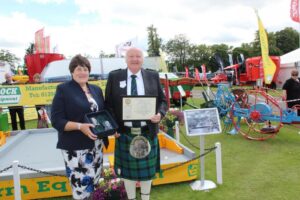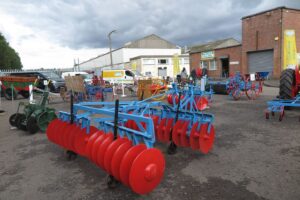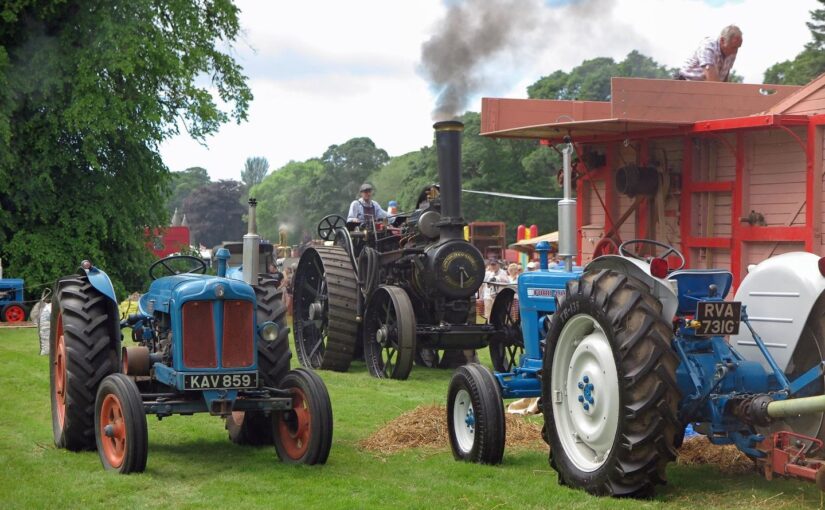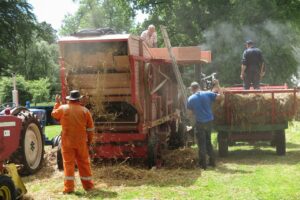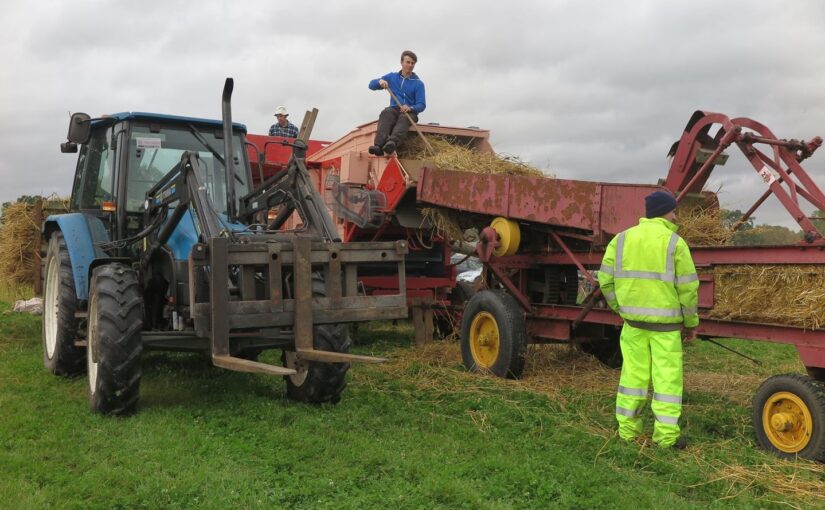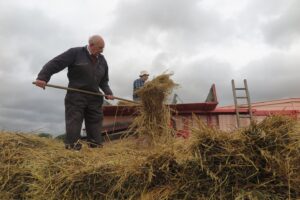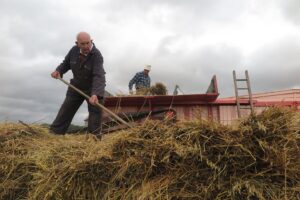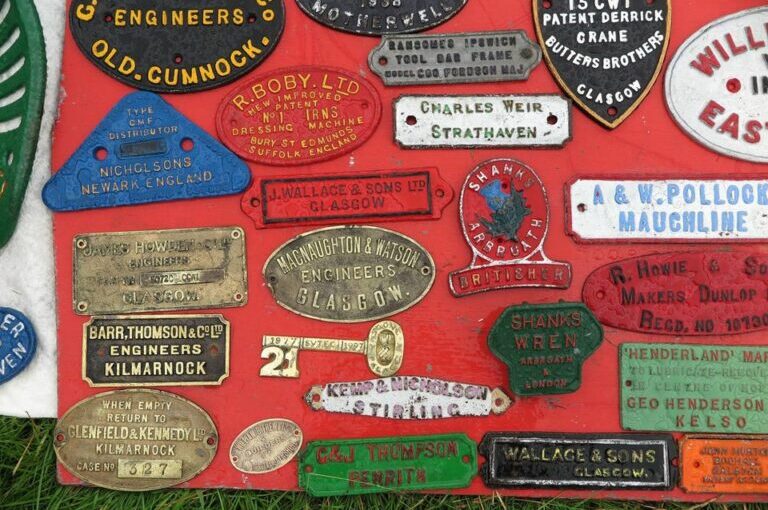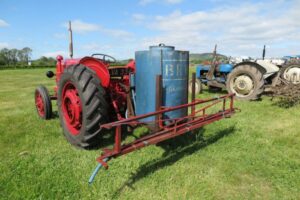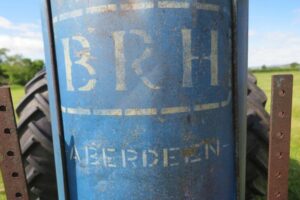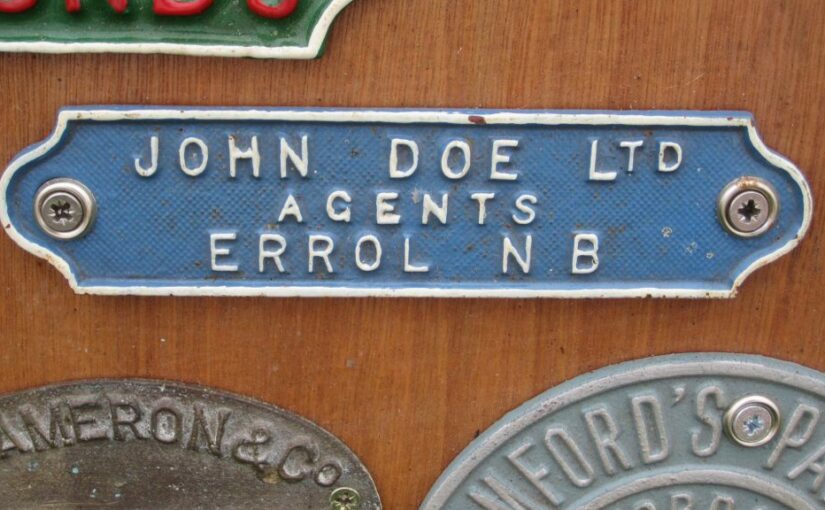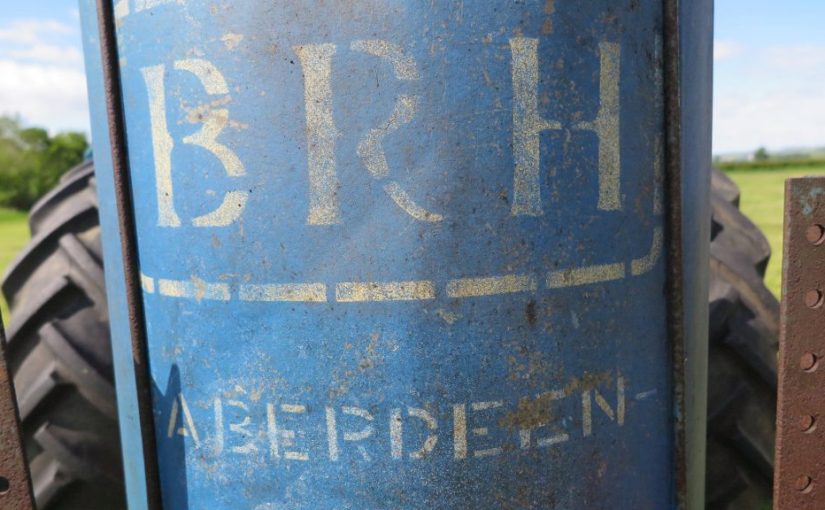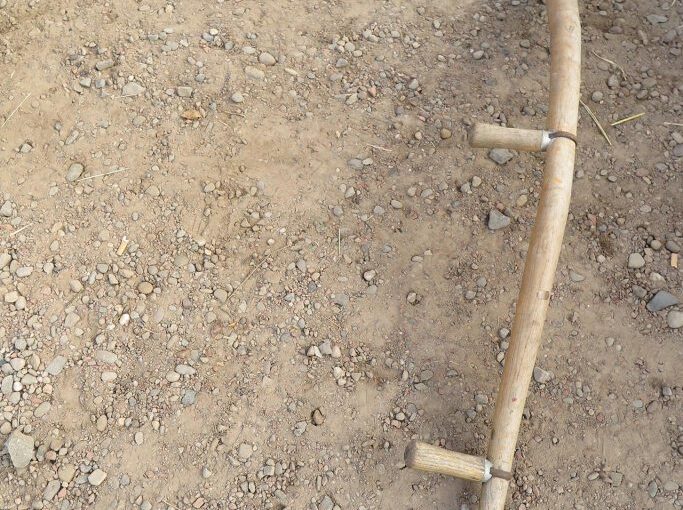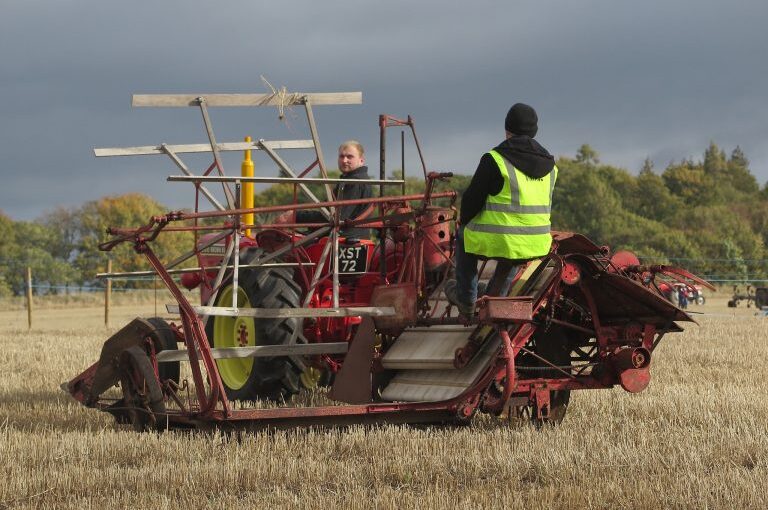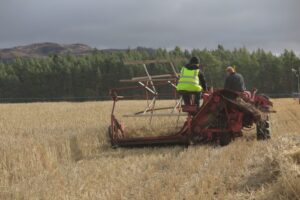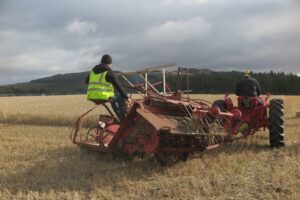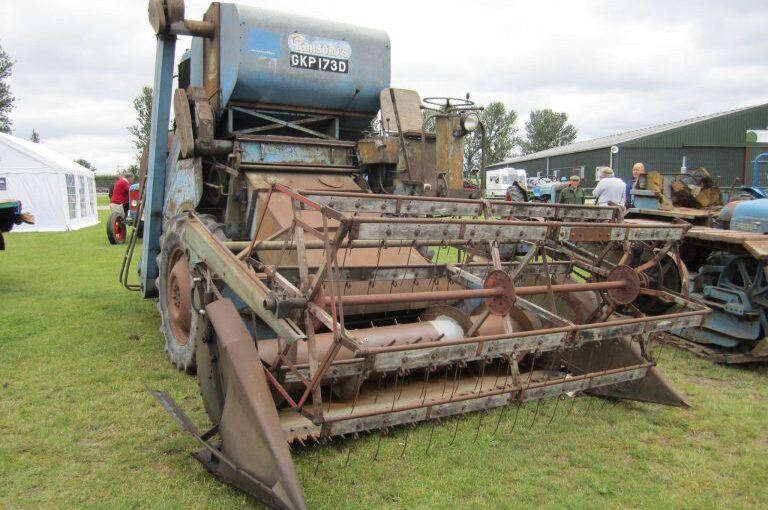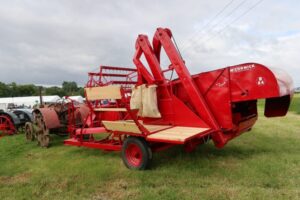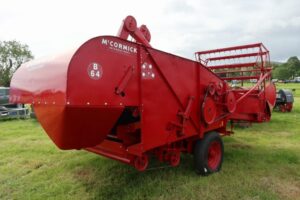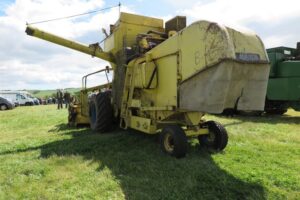In 1825 the Highland and Agricultural Society of Scotland was aware of developments in harvesting technologies to cut the grain crop on the Continent. The Flemish or Hainault Scythe was an implement that was an intermediate between a sickle and a scythe. It had the potential to make grain crops easier to harvest. A number of trials were arranged across the country. The Society sent out a questionnaire to find out about its use and how successful it was.
The following are two extracts from these trials. They describe the implement, how it was used, how it fared at the trials and advantages of this implement.
Fife herald, 25 August 1825
“Hainault scythe-East Lothian, August 17-The two individuals whom the Highland Society have brought from Flanders, for the purpose of exhibiting the use of the Hainault scythe, arrived at Haddington yesterday, and immediately commenced cutting down part of the crop on the farm of Aimsfield Mains. They repeated, again, again, their operations, at the same place, to-day; and, upon each occasion, were witnessed by a considerable number of the proprietors and tenantry of the county. The Hainault scythe is about eighteen inches in length; and in breadth, strength, and materials, resembles the common grass scythe of the country. It has a perpendicular wooden handle of about thirty inches in length, and bent at the extremity, so as to fit the arm. The blade requires frequent sharpening. In the left hand of the workman, is held a light slender rod, upwards of tree feet in length, terminated with an iron hook about four inches long; and which is dexterously used, to prevent the stalks of grain straggling in the process of cutting, as well as in collecting and lifting the grain when cut. The workmen use the scythe with the right hand only, cutting down the grain with a succession of sweeps towards the standing body of it, and advancing and retiring about six feet, to collect a small sheaf. The two individuals appeared to be stout, athletic, and expert workmen. They cut a portion of the different kinds of grain in a most satisfactory manner, leaving the stubble short, and relatively clean of dropt stalks, and the grain laying in regularity for the burden. In two hours and a half, they cut down a quarter of a Scots acre of very luxuriant and valuable wheat; complaining, however, a good deal of the stones upon the surface of the ground; and they appeared heated with exertion. I was told by M. Masclet, an intelligent agriculturist, and who acted as an interpreter to the workmen, that three individuals with the Hainault scythe could cut down two English acres of wheat per day; and at this rate of cutting, one scythe-man is equal to two of the most expert British reapers. But, judging from the exhibition we have had here, I think he has over-rated the performance of the workmen. Much however depends upon the kind of workmen the Highland Society have brought over; and if they are first-rate ones, I have little doubt but three good reapers, with scythe-hooks, will cut down as much wheat as the two Flemings could do, making the stubble equally short, though certainty not so free of dropt stalks. Cutting grain with the Hainault scythe appears to be, under almost every circumstance, less labourers than doing so with the hook or sickle; and, from the growing crop entirely supporting the weight of the cut grain, until it is collected together, it must be decidedly so when the crop is very luxuriant; and to such crops I think it is particularly applicable. If the surface of a field presents many small protuberances, or has a considerable inclination, such as the side of a hill, it would be difficult and unadvisable to use the Hainault scythe. A thin and short crop would not afford sufficient resistance for the Hainault scythe to act against, nor sufficient support to the cut grain before it is collected together; and I think it quite inapplicable to such crops in almost any situation; and if the wind happened to blow strong during the tine of cutting, half the crop would be scattered to and from. I have no doubt but that in Britain, where the crops are seldom very exuberant, the cradle-scythe, in the hands of an expert workman, will be found a very superior implement to the Hainault scythe. But upon an uneven or hilly surface, the hook or sickle is preferable to either of them-Correspondent in the Star.
The reapers having arrived at Kelso on the evening of the 18th, arrangements were made for a short trial next day, to suit the convenience of farmers attending the market; whilst Saturday the 20th was set apart for putting the abilities of the reapers to a full and fair test. Accordingly, on Friday afternoon, the use of the instrument was exhibited for about an hour, on Mr Dudgeon’s farm of Spylaw, to a very great concourse of spectators, all of whom appeared to take a most lively interest in the scene, and to derive much satisfaction from it. Next day the reapers were again upon the same ground about 10 o’clock, and proceeded to work an hour on a very heavy crop of barley. They cut 726 square yards, which, on a day’s work of ten hours, is at the rate of three-fourths of an English acre to each reaper. The ground was rather stony, and some impediment from the crowd was unavoidably sustained, otherwise, as asserted by the reapers, they would have done at the rate of an acre each at least. At first several binders tied and set up the sheaves; thereafter one man undertook the task, and performed it, but he declared he could not have gone on throughout the day, and it was evidently too much for one of the best workers to accomplish. The next trial took place upon some very light oats, and it certainly proved that the scythe was quite effectual on crops of that description, a fact which was very generally doubted. As there happened to be no wheat ready for cutting on Spylaw, the next and third trial was made upon a field of wheat near Kelso; a very fair crop, and the ground free from large stones. The day being far spent, the time was limited toa. Quarter of an hour, and the result was 212 yards, or at the rate of one acre and three-fourths, English measure, per day of ten working hours; and here again the obstructions from the crowd were very considerable. The whole corn taken down was cut closer to the ground, and cleaner than by the sickle. Three of the best reapers, with the sickle, cut an English acre per day, making also bands for the sheaves; but five are often found scarcely equal to the same work. These experiments were witnessed by a committee of the Highland Society, a Committee of the Union Agricultural Society, and a number of proprietors and eminent agriculturists; and at intervals, a number of intelligent and active workers, who had been brought forward for the purpose, were allowed to use the scythes, and received instructions from the Flemings; and many of them showed considerable expertness.-The two young Flemings are sons of farmers in French Flanders, and they allege they cannot do so much work as the labourers in their own country, who depend solely for subsistence on their daily toil.-Kelso mail”
Caledonian mercury, 5 September 1825
“Second exhibition by the Flemish reapers, in the Upper Ward of Lanarkshire
The experiment took place this day, in a field close to the village of Carnwath, occupied by Norman Lockhart, Esq and lately reclaimed from moss; it was quite level and free from stones, though the bottom was very thick and close, the clover being very strong. Here the two reapers cut at the rate of 1 acre, 3 roods, 30 poles, in a day of 10 hours, being within a fraction of an acre each.-The work was done to the astonishment of all the practical farmers, many of whom had come there quite sceptics on the subject. As some doubt had been suggested as to the effect of the implement on hilly grounds, a small portion was cut in the face of the Gallowhill, which was considered to be done even in superior style, if possible, to the level field. Some very thin oats were also tried, and even here it surpassed the expectation of the farmers, though, of course, it is not the field for the superiority of the Hainault scythe being exhibited. Several farmers came from a great distance to witness the exhibition, and so satisfactory was the result considered, that a subscription was entered into after leaving he field, and considerable premiums have been announced for the most successful competitors with this implement next season. The smith and farrier at Ravenstruther, patronised by the Local Agricultural Society, has taken the model for the best implement, and several have been already bespoke. The Highland Society are entitled to the thanks of the country for this new proof of their attention to its interests; and the company present on both occasions expressed their best acknowledgements to the gentlemen who so kindly procured so interesting an exhibition in the Upper Ward of Lanarkshire. After partaking of an ample collation, Monsieur Maselet and the two reapers proceeded to Glasgow, to exhibit in Renfrewshire to-morrow.
The exhibition to-day was again superintended by a Committee of the Highland Society of the Local Agricultural Association, and by a great concourse of spectators, who evinced the utmost anxiety to witness the exhibition; but who, at the same time, kept with wonderful precision without the line pointed out. Several young men took lessons, and we have no doubt that the implement will be adopted in many situations in the district by another year.
Lanark, August 26, 1825
The Flemish reapers exhibited at Cardonald on Saturday. The trials which have been made in this country are differently estimated by different people; some thinking the short scythe an improvement, while others consider the hook as the better implement. At Carnwath, the Flemish reapers cut five stooks in twenty-five minutes; or at the rate of sixty stooks each in ten hours, provided they had been able to exert themselves so long. The stubble was shorter than in ordinary shearing, but the sheaf was not so neat.-Glasgow chronicle”

